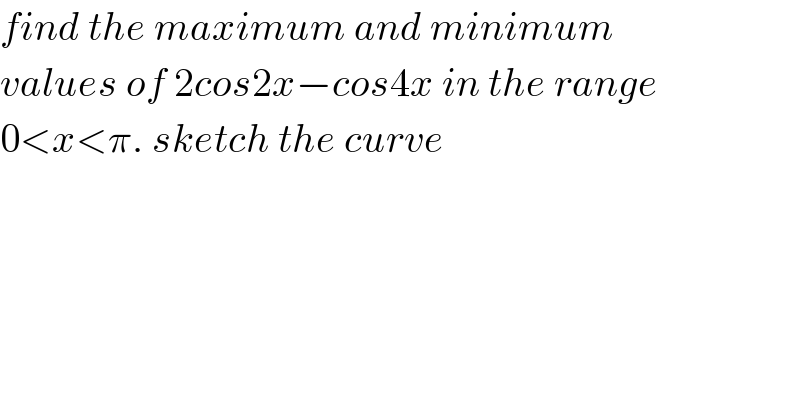
Question and Answers Forum
Question Number 123337 by aurpeyz last updated on 25/Nov/20

Commented bybemath last updated on 25/Nov/20

Commented bybemath last updated on 25/Nov/20

Commented byaurpeyz last updated on 25/Nov/20

Commented byaurpeyz last updated on 25/Nov/20

Commented bybemath last updated on 25/Nov/20
![let ∅(x)=2cos 2x−cos 4x ∅(x)=2cos 2x−(2cos^2 2x−1) ∅(x)=−2cos^2 2x+2cos 2x+1 ∅(x) = −2(cos^2 2x−cos 2x)+1 ∅(x)=−2[(cos 2x−(1/2))^2 −(1/4)]+1 ∅(x)=−2(cos 2x−(1/2))^2 +(3/2) → { ((max when cos 2x=(1/2))),((min when cos 2x=−1)) :}](Q123348.png)
Commented byMJS_new last updated on 25/Nov/20

